Understanding Steel Bollards
What Are Steel Bollards?
Steel bollards stand as silent guardians at the crossroads of safety and aesthetics, their presence often unnoticed until they’re needed most. These robust structures, crafted from high-quality bollards steel, are designed to withstand the relentless forces of nature and human impact alike. Their strength and durability make them an indispensable part of urban landscapes, protecting pedestrians, property, and infrastructure.
Understanding steel bollards begins with recognising their core purpose: to delineate boundaries and prevent unwanted vehicle intrusion. Unlike their wooden or plastic counterparts, bollards steel offers unparalleled resilience and longevity. They can be customised in various styles, from sleek modern designs to more traditional forms, seamlessly blending function with visual appeal. Here’s what makes bollards steel a preferred choice:
- Exceptional strength and resistance to corrosion
- Long-lasting performance even under extreme weather conditions
- Versatility in design and installation options
Types of Steel Used in Bollards
Behind every resilient bollard steel lies a choice rooted in material science and strategic design. The type of steel used in bollards significantly influences their performance and lifespan, especially in the face of relentless environmental challenges. High-grade stainless steel, for instance, is a popular choice because of its exceptional corrosion resistance, making it ideal for coastal or urban settings where exposure to moisture is constant. Alternatively, weathering steel—sometimes called corten steel—develops a protective rust layer that shields it from further deterioration, offering a poetic blend of resilience and aesthetic appeal.
- Carbon steel, known for its strength and ease of fabrication, is often utilised in temporary or semi-permanent bollards, where flexibility is key.
- Structural steel, with its high tensile strength, serves as the backbone of many permanent installations, capable of withstanding vehicular impacts without compromising safety.
Understanding these variations in bollards steel opens up a realm of possibilities—each type tailored to specific needs, environments, and aesthetic visions. The choice of steel isn’t merely a technical decision; it’s a philosophical one, reflecting the resilience and durability we expect from our urban guardians.
Benefits of Steel Bollards
Steel bollards are more than just sturdy barriers; they are silent guardians of urban landscapes, standing resilient against the relentless march of time and elements. Their benefits extend beyond mere physical protection, embodying a blend of strength, durability, and aesthetic elegance. When crafted from the right type of bollards steel, these structures become formidable sentinels capable of withstanding vehicular impacts and harsh weather conditions alike.
The versatility of bollards steel lends itself to a variety of applications, from delineating pedestrian zones to safeguarding critical infrastructure. The inherent properties of high-quality steel ensure longevity, reducing maintenance costs while providing peace of mind. In environments prone to corrosion, such as coastal regions, stainless steel bollards offer unmatched resistance, maintaining their appearance and integrity over decades.
Furthermore, choosing the appropriate bollards steel involves considering factors like impact resistance, environmental exposure, and aesthetic vision. For example, weathering steel, or corten steel, develops a protective rust patina that not only shields against further deterioration but also lends an industrial charm to urban settings. Its unique aesthetic appeals to architects seeking a blend of resilience and visual appeal.
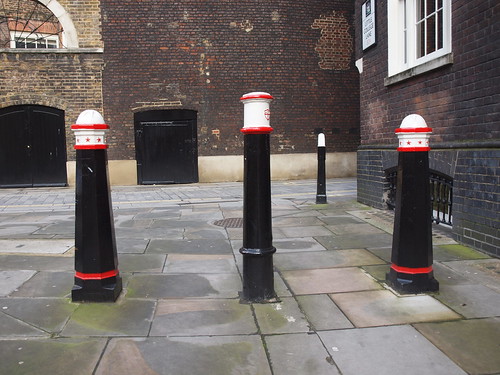
Common Applications
Across bustling urban landscapes and tranquil coastal promenades alike, steel bollards stand as silent custodians—guardians that blend form with formidable function. Their common applications are as varied as the city lights that flicker in their glow, yet each purpose shares a unifying theme: protection and demarcation. From safeguarding pedestrian zones to cordoning off sensitive infrastructure, bollards steel serve as both barrier and beacon in the fabric of modern life.
In many cityscapes, bollards steel are essential for creating clear, safe pathways for pedestrians while preventing vehicle intrusion. They act as physical deterrents without disrupting visual harmony, often seamlessly integrated into the architecture. For high-security zones, these steel sentinels are strategically positioned to thwart vehicular threats, offering peace of mind in an increasingly complex world. Their resilience makes them indispensable in locations such as government buildings, airports, and busy commercial districts.
In environments exposed to harsh weather, corrosion-resistant options like stainless steel bollards flourish, maintaining their integrity and aesthetic appeal over decades. Meanwhile, weathering steel, or corten, lends an industrial charm while developing a protective rust patina that becomes part of their character. Whether used to delineate parking areas or enhance urban aesthetics, bollards steel epitomise durability and versatility, standing resolute through time’s relentless march.
Design and Construction of Bollards in Steel
Design Considerations for Steel Bollards
When it comes to the design and construction of bollards steel, the devil truly is in the details. Steel bollards are not just robust barriers; they are architectural statements that demand careful planning to balance strength with aesthetics. A well-designed steel bollard seamlessly blends into its environment while providing the necessary security—no easy feat, considering the myriad of factors at play.
One of the most critical steel design considerations revolves around the type of steel used. High-quality, corrosion-resistant steel ensures longevity, especially in harsh weather conditions. The construction process must incorporate precise welding techniques and protective coatings to prevent rust and erosion. For example, galvanised or powder-coated steel bollards are popular choices, offering both durability and colour options to match branding or urban decor.
Design Considerations for Steel Bollards
- Structural integrity: Ensuring the bollard can withstand impact forces without buckling or deforming.
- Visibility: Incorporating reflective surfaces or contrasting colours to alert drivers and pedestrians alike.
- Ease of installation: Designing for straightforward anchoring and minimal disruption during setup.
Ultimately, the success of steel bollards hinges on a meticulous approach to their design and construction—because a bollard that looks good but fails under pressure is as useless as a chocolate teapot! Thoughtful engineering guarantees they serve their purpose while adding a touch of urban charm.
Manufacturing Processes
The manufacturing process of bollards steel is a meticulous journey that combines precision engineering with robust craftsmanship. Every stage is designed to ensure maximum durability and safety. The process begins with selecting the appropriate steel, often galvanised or powder-coated, to withstand corrosion and harsh weather conditions. This choice is crucial for long-term performance in outdoor environments.
Once the steel is chosen, it undergoes cutting and shaping using advanced machinery to meet specific design requirements. Welding techniques are then employed to join components seamlessly, ensuring structural integrity. Quality control at this stage is vital to prevent weak points that could compromise the bollard’s strength. Protective coatings are applied post-fabrication, providing an additional layer of defence against rust and erosion.
During construction, attention to detail is paramount. For instance,
- impact resistance
- stability
are engineered into each bollard to withstand collision forces effectively. The entire process reflects a commitment to quality, ensuring that bollards steel not only serve their security purpose but also complement urban aesthetics. Precision in manufacturing guarantees that each bollard is both a functional barrier and a visual asset in any environment.
Standard Sizes and Dimensions
The design and construction of bollards steel are pivotal in shaping both security and aesthetics in urban landscapes. Precision in manufacturing translates into standard sizes and dimensions that ensure compatibility across multiple environments. These steel bollards often come in fixed or removable variants, tailored to meet diverse safety demands without compromising visual harmony.
When selecting bollards steel, adherence to industry standards guarantees that each unit can withstand impact forces and environmental stressors. Typical dimensions include heights ranging from 900mm to 1200mm, with diameters varying between 100mm and 200mm, offering flexibility for different applications. For added resilience, many bollards steel incorporate features like anti-ram plates or reinforced bases, ensuring longevity and robustness.
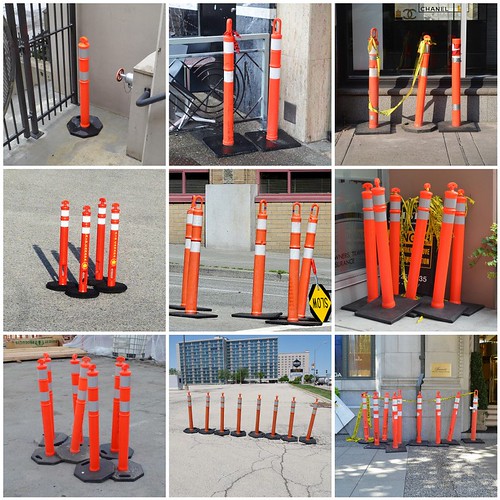
Customisation is also a hallmark of quality bollards steel. As part of the design process, designers often incorporate aesthetic elements—such as colour coatings or textured finishes—that enhance urban aesthetics. This meticulous attention to detail makes bollards not just a barrier but a visual asset. Whether for pedestrian zones, parking lots, or traffic control, the standard sizes and resilient construction of bollards steel serve as a testament to their vital role in modern infrastructure.
Innovative Design Features
When it comes to designing bollards steel that not only serve their security purpose but also elevate the urban aesthetic, innovation is key. Modern bollards feature a blend of sleek lines and durable materials, making them adaptable to a variety of environments—from bustling city centres to tranquil park pathways. The construction process often incorporates advanced techniques such as laser cutting and precision welding, ensuring each bollard is both visually striking and structurally sound.
Innovative design features include integrated lighting, which enhances visibility and safety during nighttime hours, and modular components that facilitate easy installation and maintenance. Some bollards steel are now embedded with anti-graffiti coatings and textured finishes, adding layers of resilience while embracing artistic expression. For example, textured finishes can mimic natural surfaces, helping bollards blend seamlessly into their surroundings.
Furthermore, customisation options like colour coatings and decorative elements transform these utilitarian fixtures into statement pieces. An ordered list below highlights some of the standout features that make bollards steel a versatile choice:
- Impact-resistant structures designed to withstand vehicular collisions
- Removable or fixed variants tailored for specific security needs
- Enhanced environmental resistance with anti-corrosion treatments
Every detail, from the choice of steel to the finishing touches, underscores the importance of thoughtful construction in bollards steel—combining safety with style and durability that stands the test of time.
Installation and Maintenance of Steel Bollards
Installation Methods
Installing bollards steel might seem straightforward, but the method chosen can significantly influence their durability and effectiveness. Proper installation ensures bollards stand firm against impact and weathering, providing long-lasting security. A common approach involves anchoring them into concrete foundations, which offers stability and resistance to tampering. For added strength, some installations incorporate underground reinforcement, especially in high-traffic areas.
When it comes to installation methods, it’s essential to consider the environment and purpose of the bollards steel. For temporary setups or areas requiring flexibility, surface-mounted bollards can be quickly installed using surface anchors. However, for permanent fixtures, embedding bollards steel into the ground with a robust concrete base is the preferred option. This technique guarantees that the bollards remain upright and capable of withstanding significant impact.
Maintenance of bollards steel is equally important to ensure safety and aesthetic appeal. Regular inspections should focus on signs of corrosion or damage, especially in coastal regions where salt can accelerate rusting. Cleaning with mild, non-abrasive agents preserves the finish, while repainting or applying protective coatings can extend the lifespan of the bollards steel. An often-overlooked aspect is the importance of choosing the right installation method initially—this decision impacts maintenance needs over time.
Maintenance Tips for Durability
Steel bollards are as much a testament to resilience as they are guardians of space—standing firm against the unpredictable whims of weather and impact. Proper installation is the cornerstone of their enduring effectiveness. When anchored into a concrete foundation, bollards steel can withstand the relentless forces of traffic and vandalism, transforming mere fixtures into stalwart protectors. In high-traffic zones, underground reinforcement further fortifies these sentinels, ensuring they remain unyielding over time.
Maintenance, however, is the secret to preserving their strength and visual appeal. Regular inspections for signs of corrosion—especially in coastal environments—are vital. Simple cleaning with mild, non-abrasive agents can prevent the build-up of dirt and salt, extending the life of the bollards steel. Protective coatings or repainting serve as a barrier against rust, keeping the surface pristine and functional. Remember, the initial choice of installation method heavily influences maintenance demands, with embedded bollards generally requiring less frequent intervention.
Corrosion Resistance Solutions
In the shadowed realm where steel meets the elements, the installation of bollards steel becomes an act of silent defiance against the relentless march of corrosion. Proper anchoring into a concrete foundation is not merely a matter of stability but an invocation of resilience—transforming these dark sentinels into guardians that withstand the onslaught of weather and vandalism. When embedded correctly, bollards steel are less prone to the creeping threat of rust, yet vigilance remains essential.
Protective measures are the armour that preserves their integrity. Coatings, such as specialised paints or galvanisation, serve as a formidable barrier against moisture and salt—particularly in coastal environments where the salt-laden breeze accelerates corrosion. Regular inspections, combined with gentle cleaning using mild, non-abrasive agents, help sustain their lustre and strength. For those seeking longevity, consider implementing corrosion resistance solutions that include:
- Applying high-quality protective coatings
- Periodic reapplication of paint or sealants
- Using stainless steel variants for enhanced resistance
In the dim glow of maintenance, the choice of installation method influences the frequency of upkeep. Embedded bollards steel, once set into a solid foundation, demand less frequent intervention, standing as unwavering protectors through the passage of years. Yet, even in their stoic silence, they require a watchful eye—an ongoing dance between human care and elemental fury—to truly endure the test of time.
Troubleshooting Common Issues
In the realm of urban guardianship, even the mightiest bollards steel are not immune to the wear of time and the whims of nature. Proper installation is the first step towards ensuring their enduring strength; a poorly anchored bollard can become a liability rather than a protector. When setting bollards steel into concrete foundations, it is essential to follow precise procedures—ensuring stability and resilience against accidental impacts or vandalism.
Maintenance, often overlooked, is the silent vow of longevity. Troubleshooting common issues such as surface corrosion or loose fittings requires keen observation. Regular inspections can reveal early signs of rust or structural fatigue, allowing for timely intervention. For instance, peeling paint or discolouration often indicate the need for reapplication of protective coatings. Using a combination of
- high-quality paints
- sealants
- stainless steel variants
can significantly extend the lifespan of your bollards steel.
Should problems arise, a systematic approach is vital: identify the root cause, select suitable repair methods, and execute with care. Whether it’s re-securing a loose bollard or applying a fresh layer of galvanisation, understanding the nuances of installation and maintenance ensures your steel guardians remain steadfast, unwavering in their vigil for years to come.
Regulations and Safety Standards for Steel Bollards
Industry Compliance Requirements
In the world of steel bollards, compliance with regulations and safety standards is not just a legal obligation—it’s a vital shield that ensures public safety and industry integrity. The steel bollards industry operates within a framework of rigorous standards designed to withstand the demands of high-traffic environments and unpredictable forces. Adherence to these standards guarantees that each bollard steel product performs reliably under pressure, protecting pedestrians, property, and infrastructure alike.
To navigate this complex landscape, manufacturers and installers must be familiar with a tapestry of regulations. These often include national standards, such as the British Standards (BS EN), which specify minimum impact resistance, durability, and corrosion resistance for bollards steel. Moreover, safety standards may call for specific dimensions, reflective markings, and anchoring methods to enhance visibility and stability. Sometimes, industry-specific regulations are layered in, particularly when bollards are used in sensitive locations like government buildings or transportation hubs.
Ensuring compliance isn’t merely about ticking boxes; it’s about creating a resilient barrier that can handle the rigours of real-world scenarios. The industry often relies on detailed testing procedures, including impact assessments and corrosion evaluations, to validate that bollards steel meets or exceeds these strict safety standards. By aligning with these requirements, manufacturers and clients alike foster a safer environment that withstands the test of time and the unpredictability of daily use.
Safety Features and Ratings
Regulations and safety standards for bollards steel are the unsung heroes in the world of urban protection. While they may not grab headlines, these standards ensure that every bollard can withstand the chaos of busy streets without collapsing into a heap of rust and disappointment. Impact resistance, corrosion resistance, and visibility are non-negotiable benchmarks—think of them as the steel bollards’ personal safety net.
To keep pace with ever-evolving safety demands, manufacturers often adhere to stringent norms such as the British Standards (BS EN). These standards specify essential safety features, including reflective markings and anchoring methods, which are crucial for improving visibility and stability during high-impact incidents. The key is ensuring that bollards steel not only meets but exceeds these benchmarks, transforming them from mere barriers into formidable guardians of safety.
In terms of safety features and ratings, bollards steel are evaluated through comprehensive testing procedures. Impact assessments simulate real-world collisions, while corrosion evaluations ensure longevity in harsh environments. Here’s a quick overview of common safety features:
- Impact resistance ratings
- Corrosion resistance levels
- Reflective markings for enhanced visibility
- Secure anchoring systems
All these elements combine to deliver a resilient product capable of passing the most demanding safety standards. After all, when it comes to bollards steel, compliance isn’t just a bureaucratic box to tick—it’s the foundation of a secure and dependable barrier that stands tall against the tests of time and turbulence.
Environmental Considerations
In the realm of urban safety, regulations and safety standards for bollards steel serve as the unseen guardians of our daily lives. These standards are meticulously crafted to ensure that each bollard not only meets rigorous impact resistance criteria but also withstands the relentless assault of corrosion over time. With cities expanding and traffic intensifying, the importance of compliant bollards steel cannot be overstated—each one a testament to resilience and reliability.
Environmental considerations are integral to the manufacturing of bollards steel, aligning safety with sustainability. Manufacturers are increasingly adopting eco-friendly practices, such as using recycled steel and environmentally safe coatings, to minimise their ecological footprint. The following elements often guide these environmentally conscious choices:
- Use of recycled steel materials
- Application of non-toxic, durable protective coatings
- Implementation of energy-efficient production processes
Ultimately, the pursuit of greener solutions in bollards steel production underscores a commitment to safeguarding not just pedestrians and vehicles but also the planet. As regulations evolve, so too does the industry’s dedication to blending safety with sustainability, ensuring that every bollard stands as a symbol of urban harmony and environmental stewardship.
Legal Aspects of Installation
Regulations and safety standards for bollards steel form the backbone of urban security, ensuring that these crucial barriers perform reliably under pressure. When installing bollards steel, adherence to legal requirements isn’t just a formality—it’s a vital step to prevent accidents and liability issues. Local authorities often specify strict guidelines, covering aspects like impact resistance, height, and installation depth, to guarantee safety for pedestrians and vehicles alike.
In many regions, the legal framework mandates that bollards steel installations meet certain safety features and ratings, reflecting an industry-wide commitment to quality. Compliance might involve thorough testing procedures, such as impact testing, to verify resilience. To streamline adherence, many professionals follow a structured process, which includes:
- Checking local building codes and regulations
- Obtaining necessary permits before installation
- Using certified bollards steel that meet impact and corrosion standards
By respecting these legal aspects, cities protect not just infrastructure but also the lives of those who rely on these vital safety fixtures. The careful integration of law and engineering ensures that every bollards steel installation upholds the highest standards of safety and durability, standing resilient against the tests of time and traffic.
Choosing the Right Steel Bollards for Your Project
Factors to Consider in Selection
Choosing the right bollards steel for your project requires careful consideration of several factors to ensure both functionality and longevity. Steel bollards are renowned for their robustness, but not all steel types are equally suitable for every environment. Environmental conditions, such as exposure to saltwater or acidic soils, demand specific corrosion-resistant properties in bollards steel to prevent deterioration over time.
Additionally, the intended purpose—whether for crowd control, security, or aesthetic enhancement—dictates the design and strength requirements. For instance, high-traffic areas may necessitate bollards steel with enhanced impact resistance, while decorative installations might prioritise visual appeal and finish quality.
In selecting bollards steel, consider the following key aspects:
- Grade and composition of the steel for durability and corrosion resistance
- Load-bearing capacity and impact resistance
- Finish options to match environmental and aesthetic needs
By aligning these considerations with your project’s specific needs, you can ensure the optimal performance and longevity of your bollards steel installation.
Cost vs. Quality
When it comes to selecting bollards steel for your project, balancing cost and quality is paramount. While budget constraints may tempt some to opt for lower-grade steel, the true value of high-quality bollards steel lies in their resilience and long-term durability. Investing in superior steel ensures your bollards withstand the relentless forces of impact, harsh weather, and corrosive elements, ultimately saving money on frequent replacements or repairs.
To make an informed choice, consider the specific demands of your environment and purpose. For example, high-security applications demand bollards steel with enhanced impact resistance, whereas decorative installations can prioritise finish and aesthetic appeal. The right steel grade not only elevates the visual appeal but also guarantees safety and longevity. Remember, the cheapest option today may cost exponentially more tomorrow if it fails to meet the rigorous demands of your setting.
Supplier Selection Tips
Choosing the right bollards steel supplier is akin to selecting a trusted confidant—trust and quality are paramount. With a plethora of options flooding the market, it’s easy to be swayed by the allure of lower prices, but such shortcuts often lead to compromised security and durability. A discerning buyer recognises that premium bollards steel not only enhances visual appeal but also guarantees resilience against impact, weather, and corrosion.
To navigate this maze, consider suppliers who prioritise quality assurance and transparency. Ask about their sourcing practices, manufacturing standards, and whether they adhere to industry certifications. It’s worth noting that a reputable supplier will typically offer detailed specifications and testing data, ensuring the bollards steel meets your specific security and aesthetic needs. Remember, the longevity of your installation hinges on selecting the right steel grade—because, in the realm of bollards steel, the cheapest option today often proves to be the most costly tomorrow.
Customization Options
Choosing the right steel bollards for your project is a decision that combines artistry with engineering precision. Customisation options are plentiful, allowing you to tailor your bollards to match specific aesthetic and functional requirements. From sleek, modern finishes to more rugged, industrial looks, the versatility of bollards steel means your vision can come to life with ease.
For those seeking unique features, consider options such as integrated lighting, decorative tops, or colour coatings that blend seamlessly with urban landscapes. The right choice of bollards steel can transform a utilitarian barrier into a statement piece that enhances safety and visual appeal simultaneously.
- Material grade: Selecting a high-grade steel ensures resilience and durability.
- Design flexibility: Custom shapes and finishes can be incorporated to suit your project’s theme.
- Impact resistance: Ensure the bollards steel is rated for the level of security required.
In essence, the real magic lies in balancing customisation with quality, creating bollards that are not only functional but also captivating. The right bollards steel elevates your project from mundane to magnificent — a true testament to craftsmanship and innovation!
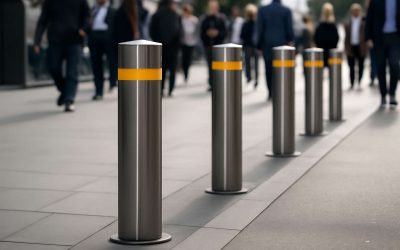
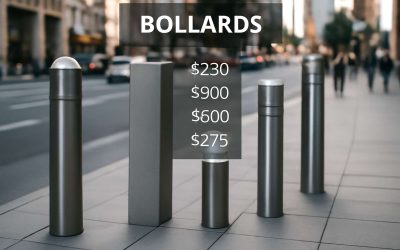
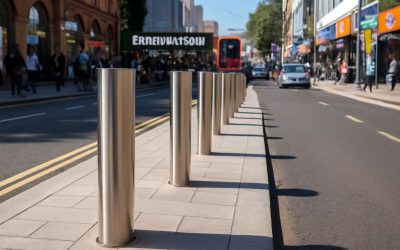
0 Comments